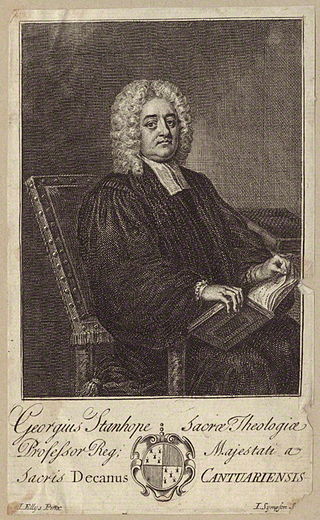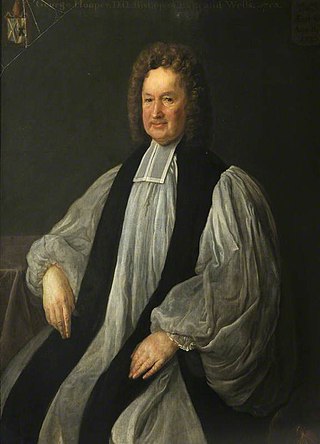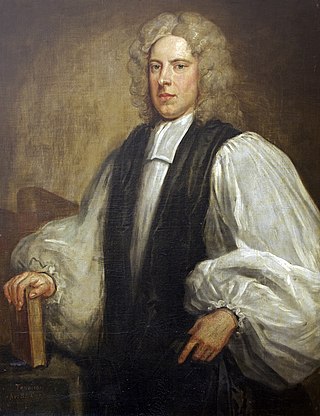
Francis Atterbury was an English man of letters, politician and bishop. A High Church Tory and Jacobite, he gained patronage under Queen Anne, but was mistrusted by the Hanoverian Whig ministries, and banished for communicating with the Old Pretender in the Atterbury Plot. He was a noted wit and a gifted preacher.

William Nicolson (1655–1727) was an English churchman, linguist and antiquarian. As a bishop he played a significant part in the House of Lords during the reign of Queen Anne, and left a diary that is an important source for the politics of his times. He was a versatile scholar, involved in numerous collaborations and contributing uncredited in the work of others.
Gwilym Owen Williams was a prominent figure in the Church in Wales who served as Bishop of Bangor from 1957 to 1982 and Archbishop of Wales from 1971 to 1982.
Jonathan Smedley (1671–1729) was an Anglo-Irish churchman who became Dean of Clogher in 1724. He was an opportunist and satirical victim who engaged in a polemic with Jonathan Swift and the forces of the Tory party.

Benjamin Robinson (1666–1724) was an English Presbyterian church minister who was a pupil of Samuel Ogden (1626–1697). He came to be a respected theologian and had his views published. He started a school in Findern in south Derbyshire.

Zachary Pearce, sometimes known as Zachariah, was an English Bishop of Bangor and Bishop of Rochester. He was a controversialist and a notable early critical writer defending John Milton, attacking Richard Bentley's 1732 edition of Paradise Lost the following year.

George Stanhope was a clergyman of the Church of England, rising to be Dean of Canterbury and a Royal Chaplain. He was also amongst the commissioners responsible for the building of fifty new churches in London, and a leading figure in church politics of the early 18th century. Stanhope also founded the Stanhope School in 1715.

George Hooper was a learned and influential English High church cleric of the late seventeenth and early eighteenth centuries. He served as bishop of the Welsh diocese, St Asaph, and later for the diocese of Bath and Wells, as well as chaplain to members of the royal family.
Arthur Price was Church of Ireland Archbishop of Cashel from 1744 until his death. Previously he had been Church of Ireland Bishop of Clonfert (1724–1730), Ferns and Leighlin (1730–1734) and Meath (1734–1744).
John Evans was a Welsh Anglican cleric, known for his attacks upon Methodism.
William Jane (1645–1707) was an English academic and clergyman, Regius Professor of Divinity at Oxford from 1680.
Henry Leslie was a Scotsman who became the Church of Ireland Bishop of Down and Connor from 1635 to 1661 and briefly Bishop of Meath from January to April 1661.

Robert Morgan was a Welsh Bishop of Bangor.
Francis Hare (1671–1740) was an English churchman and classical scholar, bishop of St Asaph from 1727 and bishop of Chichester from 1731.
Edward Jones (1641–1703), was a Welsh Anglican bishop who served as Bishop of Cloyne and Bishop of St Asaph.
Thomas Brett (1667–1743) was an English nonjuring clergyman known as an author.

Edward Tenison (1673–1735) was an English bishop of Ossory. An example of the workings of the system of patronage in the Church of England, Tenison also was a significant Whig and controversialist.

John Sterne (1660–1745) was an Irish Church of Ireland clergyman, bishop of Dromore from 1713 and then bishop of Clogher from 1717.
This article is about the particular significance of the year 1724 to Wales and its people.









